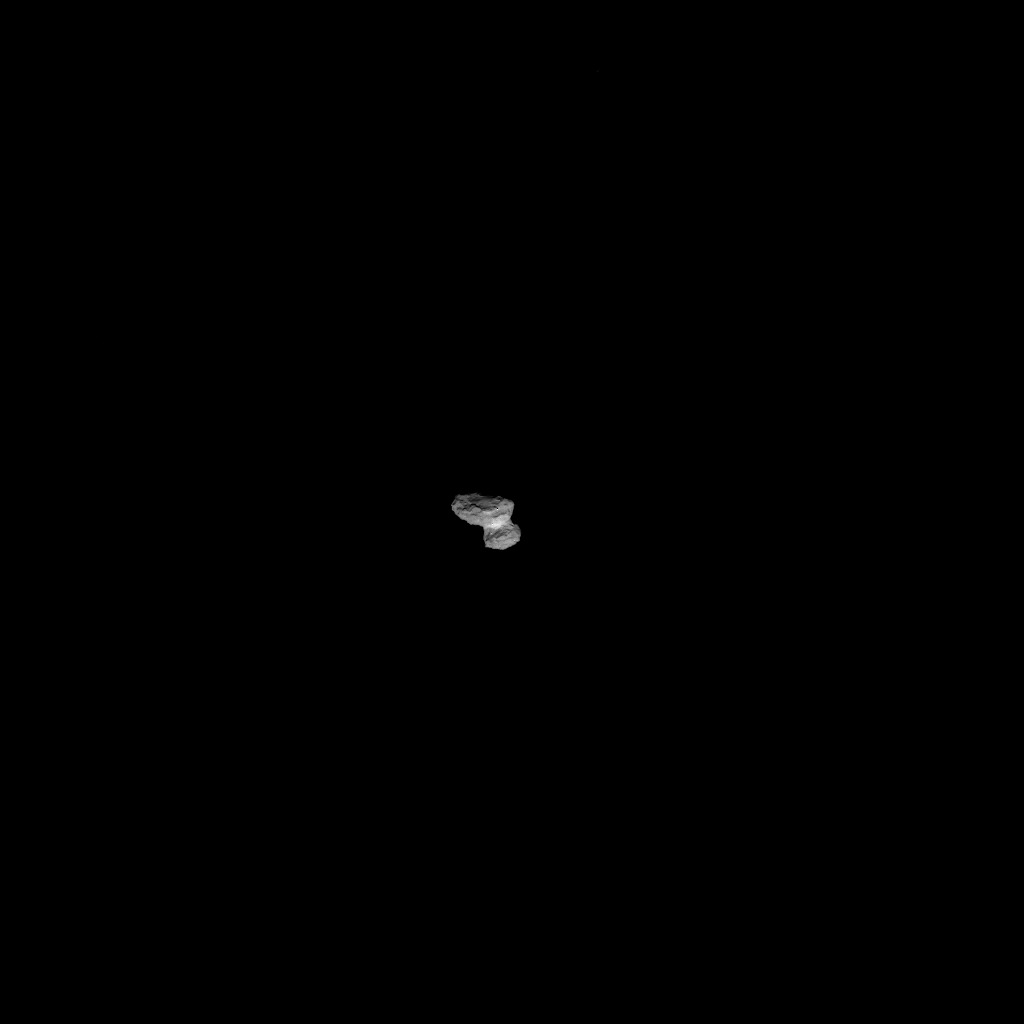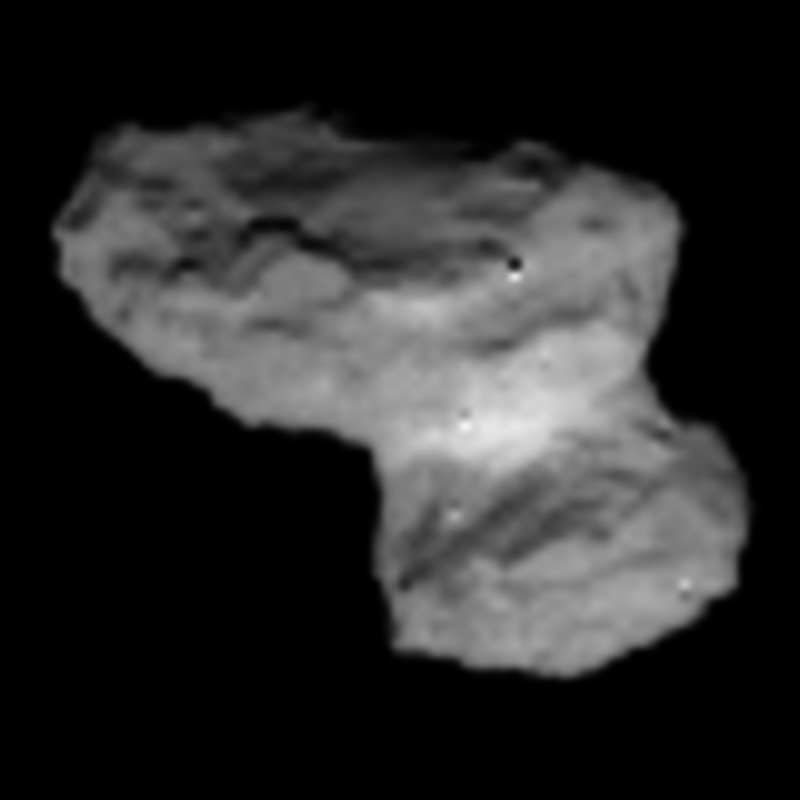Rosetta navigation camera (NAVCAM) image taken on 1 August 2014.
We’re pleased to be able to share a NAVCAM image with you today that shows the comet in a different orientation to the previous week. Until Thursday this week there was a navigation slot once a day, typically at the same time of the day. Due to the rotation period of the comet of 12.4 hours we therefore got almost the same rotation phase each time. Over the next few weeks NAVCAM images will be taken more regularly and so we will see more variation in the NAVCAM images provided here.
Please note that there are artefacts in the images, such as the two “eyes” (the small crater-like features) discussed in the comments section of yesterday’s image. Soon the comet’s nucleus will fill a significant fraction of the field of view and then interpolation and cropping will probably not be needed.

Full-frame NAVCAM image taken on 1 August 2014 from a distance of about 1026 km from comet 67P/Churyumov-Gerasimenko. Credits: ESA/Rosetta/NAVCAM
View and download interpolated image here.










Discussion: 14 comments
Fantastic! Wishing continued success to Rosetta.
Impressive! Possibly a large boulder upper right,length of the shadow depends on the solar aspect angle.Can’t wait for the narrow angle camera view!Congrats!
It looks like there are several boulders or domes. I assume they appear smooth and rounded only because of the image processing algorithms.
But presumably (because of reverse highlight/shadow orientation to the craters) they are protusions on surface.
As investigations evolve, it will be interesting to see whether they are aggregations from low-speed collisions, or the result of differential ablation.
As Emily has pointed out, most of the “boulder-like” things with “shadows” in these images are artefacts, due to pairs of black/white bad pixels in the NAVCAM detector which then get smoothed out in the interpolation.
We are looking at fixing those in the images before interpolation, and will in any case soon be putting out uninterpolated images, as the comet grows in the NAVCAM field-of-view.
Hi Mike,
Can I say a huge Thank You to ESA for doing this at the weekend. The NAVCAM image is as good at least as the OSIRIS image released on Thursday.
ESA has more than just ‘stepped up to the plate’ regarding image releases, the NavCam images are excellent and are of enormous scientific importance as well as for navigation purposes.
The fact you are taking time out of your weekend to do this for us is wonderful and I personally Thank You for this.
These images are more than good enough to start toying around with ideas with what we are looking at here.
The more elongated lobe certainly looks more layered and orderly than the more spherical lobe, which in my mind is another object entirely fused to the elongated lobe.
The ‘neck’ looks smoother, a shorter version of the ‘neck’ seen at Comet 103P / Hartley by the NASA Deep Impact spacecraft during that incredible encounter.
This is just getting better and better on a daily basis, Rosetta is delivering huge time as she has always done, the Earth-Moon encounters, the astonishing Mars encounter, Main Belt Asteroids 2167 Steins and the huge 21 Lutetia.
Now Comet 67P/Churyumov–Gerasimenko is coming out of the shadows. 😀
Giotto 1986 and Rosetta 2014: my astronomical dreams! Thanks ESA!
Wow these are as good as the OSIRIS image released on Thursday.
This is just astonishing 😀
Thank you so very much ESA for these excellent daily releases 😀
Fantastic; i think ; that are deep craters..–
Nope: artefacts, I’m afraid (see above).
We’ll see much more soon though; only 4 days to rendezvous 🙂
Indeed,
Please keep this up. 😀
Sorry, I meant Mark, not Mike, my bad !
It looks like an ancient winter shoe
The smaller lobe looks like a good fit for the depression on the “top”.
Could have split and rejoined.
Mark, many congratulations to you and your team. A truly great achievement.
Kind regards
David McCaughrean ( Liverpool)